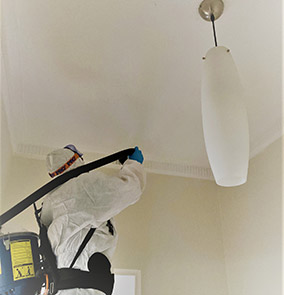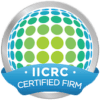Mould Remediation

Complete Hygiene Services (CHS) offers a complete mould remediation process. This includes full structural drying and dehumidification, containment, and decontamination as well as demolition and disposal of contaminated materials. We also recommend third party air quality testing to ensure dangerous spores have been removed and the property is safe for You, Your business, and Your family.
There are thousands of different types of mould found indoors and outdoors and if your business or home has been affected by mould, it’s important to ensure that it’s quickly and effectively removed before it becomes dangerous and affects the structural integrity and air quality of your home.
Mould remediation is a complex process that involves more than just a wipe and clean of the affected surfaces. The potential health hazards and risk of recurring issues means that most mould damage should be left to professionals.
Our IICRC qualified experts will assess your property and provide end-to-end structural remediation and mould decontamination as per industry standard ANSI/ IICRC S520 Standard for Professional Mould Remediation, 2015.
CHS’s IICRC Certified Mould Remediation professionals utilise some of the following steps to treat the problem:
- Conduct a site visit – to assess your property and identify any moisture problems first – this will need to be fixed as mould requires moisture to grow – prior to mould remediation.
- Install Engineering controls – isolate areas of mould growth with containment to avoid cross-contamination as any airflow across affected mouldy areas can spread mould spores around your home/building – before demolition, remediation or drying can occur.
- Dispose of Absorbent Materials – porous items including carpet or furniture and drapery have fibres in which mould can remain even after you have cleaned them. They will need to be disposed to stop the problem from reoccurring.
- Detail clean/ Remediate the mould – once affected porous materials have been removed, any remaining structure – including subfloors, timber framing, walls and ceiling can be cleaned. All visible traces of mould will be removed before an antimicrobial or biocide treatment is used to clean the surfaces during a wet wipe.
- Thoroughly Dry environment – a thorough drying process is required to complete mould remediation. This will be accomplished using air movers and dehumidifiers as well as moisture meters to ensure materials have reached the Dry Standard.
- Recommend a third-party Environmental Hygienist – to conduct air and tape samples in affected area BEFORE and AFTER. This includes air quality testing to ensure the property is safe and mould remediation was successful.
- We work Safely – Mould Remediation requires a great level of care and expertise and CHS’s Mould Remediation technicians wear personal clothing including gloves, goggles, coveralls, and respirator masks in order to avoid inhaling mould spores during remediation. We ensure we are safe and you and your family are safe at all times..

BEFORE – Mould affected walls in bedroom

CHS mould experts identified moisture and leak was identified and fixed. Mould affected wet gyprock walls removed to find Condition 3 mould in internal wall cavities.

Mould experts cleaned mould expertly before drying the structure

Structural drying has commenced.

AFTER – Affected wall is Dry, encapsulated and ready for reinstatement

Water damage left untreated will result in mould growth and over time, structural damage to the whole area – lower walls were removed and mould remediation commenced in the above unit for a leak in the bathroom.

Mould removal isn’t a job that should be taken lightly, and it requires a great level of care. CHS’s specislist teams always wear protective clothing during mould remediation to avoid inhaling mould spores and encountering a myriad of health problems.

STRUCTURAL DRYING IS AN IMPORTANT PART OF MOULD REMEDIATION

COMPLETE HYGIENE SERVICES (CHS) OFFERS SPECIALIZED MOULD REMEDIATION SERVICES IN THE FOLLOWING SITUATIONS:
- STRUCTURAL DRYING – After flooding or large leaks in a property, proper structural drying via dehumidification and air purifying equipment ensues that indoor air quality guidelines are followed.
- DISASTER RECOVERY AS A RESULT OF FLOODING & STORMS – Flood water can be contaminated by sewage, chemicals, dead animals and bacteria, and contaminated water damage must be dealt with by an expert.
- SPECIALISED ITEM CLEANING – Different items (contents including furniture) require different methods of cleaning and decontamination.
- HVAC SYSTEM CONTAMINATION – When a HVAC system is contaminated by mould, the infestation can quickly spread and become a large-scale issue. The entire HVAC system needs to be cleaned and decontaminated and the affected rooms will need to be tested.
If you suspect your home or business has mould, call our Mould Remediation experts at Complete Hygiene Services (CHS) and let us Help Keep You and Your business and family, Safe..
Testimonials
The dedicated and reliable team from CHS gave us great comfort in knowing that our problem was being professionally and competently addressed. We have no hesitation in recommending Complete Hygiene Services to carry out repairs, restoration and/or remediation should the need arise.
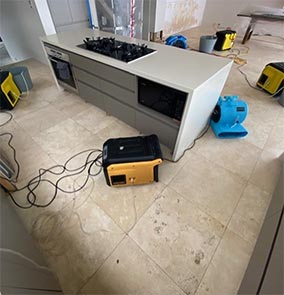
I would like to congratulate Vanessa and her excellent team of very professional and cheerful workers. Before Vanessa arrived, I was very stressed about the whole process of decontaminating a large percentage of the house. From the moment Vanessa arrived to assess the damage, she put me at ease with her friendly, professional manner and her knowledge of the problem.

Thank you for your thorough work and comprehensive report.
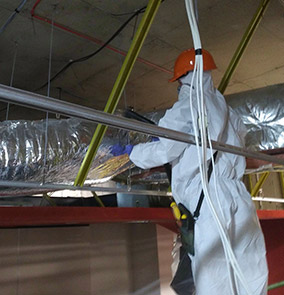
CHS and Aeris Active kept my business (private gym) open during Lockdown in Sydney. I use it every week to keep my Gym equipment sanitised and my clients safe.. the product Aeris Active is amazing!
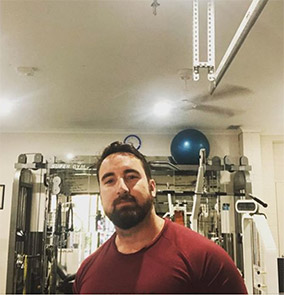
Amazing! CHS did a Fantastic job on our home as we were victims of the Bush Fires on Jan 2020. Our house was unlivable as fire had ravaged our home and land. CHS was very professional and within 5 days our home was cleaned and it smelt fresh and amazing and everything was better than what it was originally. House was restored from floors to ceiling and I couldn’t be more thrilled! What a splendid job! I can’t recommend them highly enough
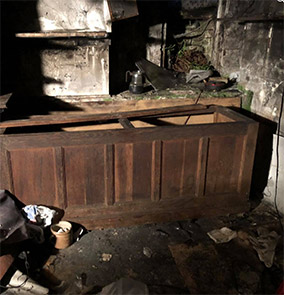
CHS did a precautionary Deep clean of our premises before we re-opened to the public in May 2020 and I’m impressed by the quality of their work! They did an amazing job and were very thorough and went above and beyond in their deep cleans – Well Done guys! I reopened my gym with the confidence that all my clients would be safe!
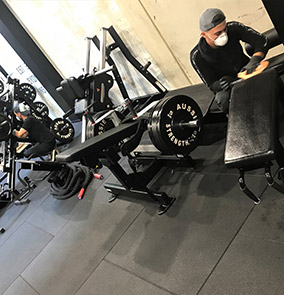
Amazing work and very professional, wonderful work guys
